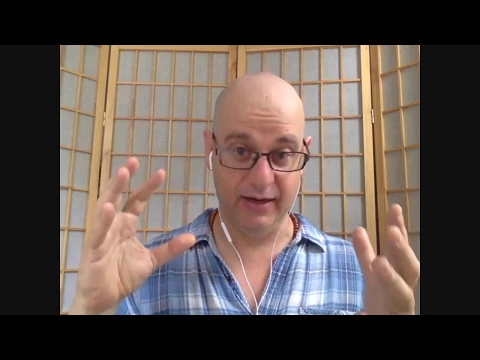Listen in as Brandt discusses how to speak with yoga therapy clients about practices which promote neuroplasticity and how that helps with habit change. If you’re an aspiring yoga therapist looking to get into this emerging field, check out our residential and online training programs to get certified.
Brandt: I think what’s helpful, most helpful for people, is that your brain is completely changeable, and at the same time its tendency is to keep doing the same thing, and therefore, if you want it to change, you actually can’t just think something else, you have to do a practice that changes it. So when I talk to people, and I actually probably have that conversation, one out of five people I see, you know what I mean? Somehow that comes into it because it’s about habit change, right?
And so, the argument for habit change, and I think what’s not intuitive for people, for instance, is that doing an asana practice even, which is shocking to me, makes, you know, enhances neuroplasticity. So if you want to stop having negative thoughts about … whatever, your spouse, I don’t know, you know what I mean, it wouldn’t naturally occur to you to do a bunch of down-dogs or to do meditation for 15 minutes, right?
So, usually, I’m talking to people about their goals and what’s going to actually get them there. And the science piece is that what’s actually going to get you there, it’s usually around meditation, in my practice right now. So it’s like, what’s actually going to get you there is to actually do this practice that has nothing to do with what you’re trying to do. And that’s the leap, right, because that’s like, “Why would I, you know, follow my breath if I’m trying to…” even, like, lose weight. I mean, whatever, you know, stop eating cookies at night or any kind of habit change, right? Stop road raging. Like, what’s the connection, you know?
Interviewer: And what do you say if they’re like, “How is meditating for 15 minutes a day going to help me stop eating cookies at night?”
Brandt: Because you have your neural pathways that are there now. Your goal is to have different ones, or at least other ones that compete with them. So, right now, you have all the pathway of eat late at night, that’s what we do. And then, you are trying to develop new, basically, brain chemistry is what they’ve found out. That’s the science, right? Is that it’s not just willpower. In fact, it’s not at all. It’s brain chemistry and how your brain…and the brain anatomy, so it’s like how your brain’s actually configured.
So the science says that you are unlikely to make habit changes unless you put yourself in a state where your brain can become more plastic. I try not to use “plastic” because only me and you understand that, you know what I mean? Such a weird word. So, more changeable. And it turns out…and then you go back into yoga land. But often, I’m saying things like, “Tranquility states and meditation, what you’re almost feeling, is the state in which you can change brain chemistry and neural pathways.”
So you would think that the way to not eat cookies at night is to put a note on your fridge saying, or your cabinet door, saying, “Don’t eat cookies,” right? But it’s not. So everything you’ve been trying to do to stop your patterning, you’re working against yourself. You’re wasting your time because all of the science now is saying people don’t do that. But what people do is, for instance, meditate for 20 minutes a day, and they are able to actualize change. So it moves, you know, you’ve changed your brain so now that you can actually do what you want to do.


